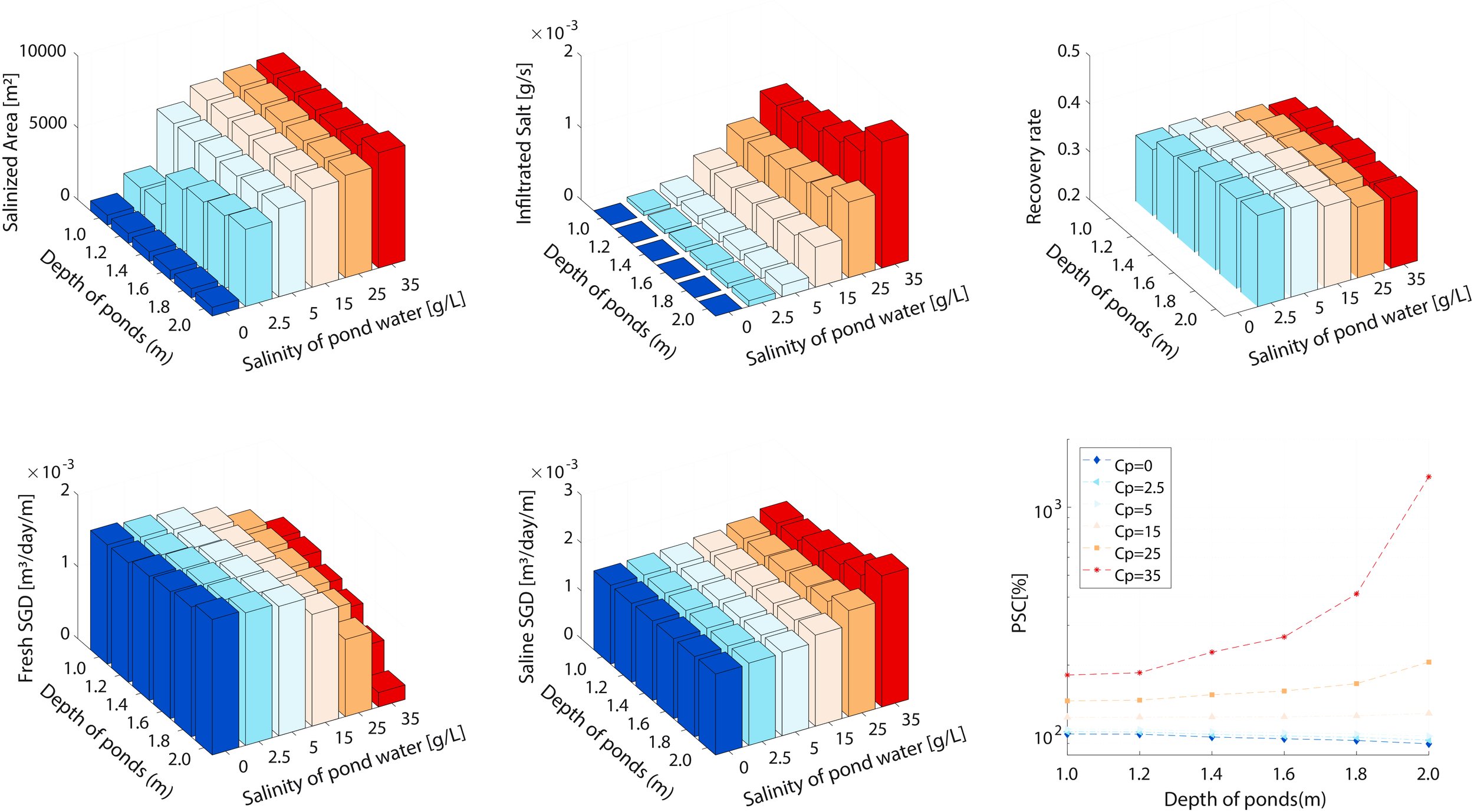HGS RESEARCH HIGHLIGHT – Impacts of Coastal Shrimp Ponds on Saltwater Intrusion and Submarine Groundwater Discharge
Hou, Y., Yang, J., Russoniello, C. J., Zheng, T., Wu, M., & Yu, X. (2022). Impacts of Coastal Shrimp Ponds on Saltwater Intrusion and Submarine Groundwater Discharge. In Water Resources Research (Vol. 58, Issue 7). American Geophysical Union (AGU). https://doi.org/10.1029/2021wr031866
CLICK HERE TO READ THE ARTICLE.
We are happy to highlight a new paper published by a team of international researchers from Sun Yat-Sen University, Hohai University, West Virginia University, Ocean University of China and the Chinese Academy of Sciences. This study investigates the potential impact that aquaculture can have on solute transport and saltwater intrusion in coastal settings. It is certainly an interesting read, and an interesting conceptual problem. Typically when we think of vertical saltwater intrusion it’s due to coastal inundation associated with temporary natural causes like storm surges. However, with shrimp pond aquaculture saline ponds are actually perched on top of agricultural soils, above a freshwater aquifer. In this study the authors have investigated several scenarios (varying pond water salinity, ponded water depth and farm/pond width) to see how it impacts a previously unrecognized/unstudied process contributing to groundwater salinization.
Schematic diagram of surface and subsurface model domains and simulation scenarios. (a) The unconfined aquifer extends offshore with pondwater (light blue) and seawater (dark blue) prescribed at the surface. White dashed line indicates groundwater table. Pond salinity, pond water depth, and farm width were varied to represent scenarios of different aquaculture practices. The plotted salinity distribution is for the scenario with the bold parameter values.
Plain Language Summary:
Understanding coastal groundwater salinity and flow is important for managing limited fresh groundwater resources and protecting precious estuarine environments, especially in densely populated coastal areas. Coastal groundwater studies have shown the impacts of diverse natural hydrogeological driving forces and settings. Recently, global expansion of coastal aquaculture ponds has raised environmental concerns about contaminants discharging to surface waters, but less attention has focused on groundwater flow. We developed conceptual models of coastal shrimp ponds to simulate how aquaculture impacts groundwater salinity and discharge into nearby coastal waterbodies. Our results show that coastal aquaculture ponds can contaminate surficial aquifers with saline water and increase discharge of groundwater and solutes to the ocean. This work improves the understanding of human-induced saltwater intrusion with scientific implications for coastal groundwater practitioners and estuary management.
CLICK HERE TO READ THE ARTICLE.
Abstract:
Shrimp aquaculture has expanded rapidly in coastal zones worldwide over the past few decades. Saline water stored in shrimp farm ponds can infiltrate into the underlying aquifer causing groundwater salinization and increased submarine groundwater discharge (SGD) to coastal water. However, little research has assessed salinization resulting from these shrimp ponds. To understand the impacts of shrimp farm irrigation on groundwater salinization and SGD, we numerically simulated a series of aquaculture management scenarios in a two-dimensional conceptual coastal aquifer using a coupled surface-subsurface approach. We characterized sensitivities to pond water salinity, pond water depth, and farm width. Salinization was assessed by three indicators (salinized area, infiltrated salt mass, and recovery rate), and three SGD indicators were evaluated (fresh SGD, saline SGD, and saltwater circulation rate). Our results show that pond water depth is the primary control on the mass of saltwater infiltration while farm width is the primary control for recovery rate. Pond water salinity and depth affect both fresh and saline SGD. We show that aquaculture is a previously unrecognized mechanism of salinization affecting coastal aquifer vulnerability and SGD. A regional graphical information system analysis shows transformation into aquacultural ponds could introduce considerable SGD variability spatially and temporally. These findings will enable coastal managers to better evaluate groundwater vulnerability in regions with expanding onshore aquaculture and demonstrates the impact of aquaculture on coastal groundwater resources and the need for further study to understand the impact of aquaculture across Asia and the globe.
The calculated values of the indicators in response to different pond depths and salinities (with constant pond width of 300 m): (a) salinized area, (b) infiltrated salt mass, (c) recovery rate, (d) Fresh SGD, (e) saline SGD, and (f) percent saltwater circulation (PSC).
Key Points:
Coastal shrimp pond farms cause vertical saltwater intrusion and increased submarine groundwater discharge
Pond depth controls vertical extent of saltwater intrusion; farm width controls recovery rates
Pond water salinity and depth affect character of both fresh and saline submarine groundwater discharge


